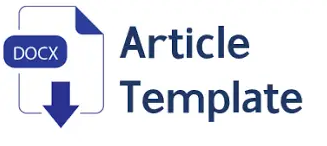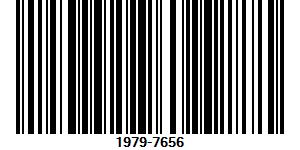Analisis Akurasi Perbandingan Jumlah Layer Deteksi Warna Objek Menggunakan Algoritma Convolutional Neural Network
Keywords:
Convolutional Neural Network, Deteksi Objek, Klasifikasi Warna, Transfer Learning, Deep LearningAbstract
This study evaluates the impact of variations in the number of layers on the implementation of the Convolutional Neural Network (CNN) algorithm in a color-based object identification and categorization system, using python language supported by the TensorFlow/Keras framework. The data used is a collection of visual data in the form of red and white cups divided into a proportion of 90% training data and 10% testing data in the dataset in this study which amounted to 62 red cup data and 59 white cup data. Testing was carried out by comparing three different convolution layer configurations of 1, 2, and 3 layers, where each configuration was integrated with a max pooling and fully connected layer. The results of the study showed an accuracy of 92%, precision of 93%, recall of 92%, and f1-score of 92%. On the other hand, the application of two and three convolution layers actually showed a significant decline with an accuracy of only 46%.
References
[1] I. Astuti, W. W. Ariestya, and B. Solehudin, “Deteksi Objek Daun Semanggi secara Real TIME Menggunakan CNN-Single Shot Multibox Detector (SSD),” J. Ilm. Fifo, vol. 14, no. 1, pp. 47–58, 2022, doi: 10.22441/fifo.2022.v14i1.005.
[2] W. Silvani, S. Aurelia, N. Zulatifa, T. Agustin, and S. Indonesia, “Pengaruh Jumlah Epoch Terhadap Akurasi Model Convolutional Neural Network dalam Klasifikasi Penyakit pada Tanaman Padi,” in Seminar Nasional Amikom Surakarta (SEMNASA) 2024, 2024, pp. 179–190.
[3] M. A. R. Ramadhan, T. Apriliyan, N. Ananta, and A. A. Zakkyfriza, “Perbandingan Jumlah Layer Pada Convolutional Neural Network Untuk Meningkatkan Akurasi Dalam Klasifikasi Gambar,” Merkurius J. Ris. Sist. Inf. dan Tek. Inform., vol. 2, no. 5, pp. 211–217, 2024.
[4] M. Krichen, “Convolutional Neural Networks: A Survey,” Computers, vol. 12, no. 8, pp. 1–41, 2023, doi: 10.3390/computers12080151.
[5] W. McKinney, “Data Structures for Statistical Computing in Python,” in Proceedings of the 9th Python in Science Conference, S. van der Walt and J. Millman, Eds., 2010, pp. 56–61. doi: 10.25080/Majora-92bf1922-00a.
[6] C. R. Harris et al., “Array programming with NumPy,” Nature, vol. 585, no. 7825, pp. 357–362, 2020, doi: 10.1038/s41586-020-2649-2.
[7] A. H. Sial, S. Yahya, and S. Rashdi, “Comparative Analysis of Data Visualization Libraries Matplotlib and Seaborn in Python,” Int. J. Adv. Trends Comput. Sci. Eng., vol. 10, no. 1, pp. 277–281, 2021, doi: 10.30534/ijatcse/2021/391012021.
[8] D. K. Barupal and O. Fiehn, “Generating the blood exposome database using a comprehensive text mining and database fusion approach,” Environ. Health Perspect., vol. 127, no. 9, pp. 1–10, 2019, doi: 10.1289/EHP4713.
[9] M. Abadi et al., “Tensorflow: Large-scale machine learning on heterogeneous distributed systems,” arXiv Prepr. arXiv1603.04467, 2016.
[10] J. Heaton, “Ian Goodfellow, Yoshua Bengio, and Aaron Courville: Deep learning,” Genet. Program. Evolvable Mach., vol. 19, no. 1–2, pp. 305–307, 2018, doi: 10.1007/s10710-017-9314-z.
[11] Y. Lecun, L. Bottou, Y. Bengio, and P. Haffner, “Gradient-based learning applied to document recognition,” Proc. IEEE, vol. 86, no. 11, pp. 2278–2324, Nov. 1998, doi: 10.1109/5.726791.
[12] C. Shorten and T. M. Khoshgoftaar, “A survey on Image Data Augmentation for Deep Learning,” J. Big Data, vol. 6, no. 1, p. 60, 2019, doi: 10.1186/s40537-019-0197-0.
[13] A. Khan, A. Sohail, U. Zahoora, and A. S. Qureshi, “A survey of the recent architectures of deep convolutional neural networks,” Artif. Intell. Rev., vol. 53, no. 8, pp. 5455–5516, 2020, doi: 10.1007/s10462-020-09825-6.
[14] P. W. Cahyo and U. S. Aesyi, “Perbandingan LSTM dengan Support Vector Machine dan Multinomial Na ve Bayes pada Klasifikasi Kategori Hoax,” J. Transform., vol. 20, no. 2, p. 23, 2023, doi: 10.26623/transformatika.v20i2.5880.
[15] A. Arum Sari and P. Pramono, “Prediksi Serangan Sql Injection Pada Jaringan Komputer Menggunakan Metode Support Vector Machine (SVM),” J. Tecnoscienza, vol. 8, no. 2, pp. 317–326, 2024, [Online]. Available: https://www.kaggle.com/datasets/syedsaqlainhussain/sql-injection-dataset









